Today it has become the norm that a child entering school requires much more knowledge and skills than was the case two or three decades ago. One of the important requirements for the volume of knowledge is learning letters. Nowadays, children are taught letters and sounds in preschool and various school preparation groups. However, knowledge will become more complete if preschool children constantly replenish and consolidate it in home education. Parents will be able to effectively teach their child if they use techniques for introducing children to letters, sounds, words and follow certain recommendations. What should adults know to teach a child letters?
Preschool age is the best period for learning letters
Many parents with small children have a question: when is the best time to start learning the alphabet? There are several opinions on learning letters by preschoolers:
- According to many modern parents, it is necessary to teach a child to read as soon as he speaks. They begin to master original techniques and purchase special manuals. However, there is not always enough patience and knowledge to complete the training that has begun. Therefore, the task of parents is to organize home schooling in such a way that both adults and children can do it.
- According to psychologists, there is no need to rush to teach your child the alphabet. If a child is not ready to perceive educational material, he may develop a persistent reluctance to learn letters and subsequently read. After all, this is a rather difficult task, requiring mental tension, attention, and speech. Experts believe that the optimal age for learning letters is 4–5 years, when the child is psychologically ready to learn. At this age, interest in everything new and a desire to be like an adult are more evident. Adults should take advantage of this interest and desire to learn new things.
- According to teachers (authors of early learning to read N. Zaitsev, G. Doman, V. Voskobovich), you can teach your child the alphabet much earlier than preschool age, for example, at one to two years old, if the baby shows such a desire.
The main thing that parents need to remember is that teaching should be free of coercion. Important: parents need to understand why we teach letters with a small child. If a preschooler under 4-5 years old really wants to learn the alphabet, then his desire should be encouraged. And if this is a tribute to fashion and the parents’ desire to keep up with others, then there is no need to rush. It is better to focus on general intellectual preparation and development of the speech apparatus by reading books, composing creative stories, inventing fairy tales, memorizing poems and sayings. Then preparation for school in senior preschool age will take place without stress. The preschooler himself will strive to keep up with his peers, acquire new knowledge, and actively behave in home classes to learn the alphabet.
Learning the letter B
A selection of ready-made tasks for learning the letter B. All materials are ready for printing.
For children from 4 to 8 years old.
The benefits will be useful to caring parents, kindergarten teachers, primary school teachers, speech pathologists, and speech therapists.
What is developed: active vocabulary, sound-letter analysis, fine motor skills, attention, memory, thinking, perseverance, subject-letter gnosis.
Copy letter B
Tasks with the letter B
Find all the letters B
For a speech therapist, letter B
Where is the letter B hidden?
Help Pinocchio
Tasks with the letter B for children 4-6 years old
Tasks for children 4, 5, 6 years old
Introduction to B for preschoolers
Find pictures with sound B
This task introduces preschool children to the image of the letter B. Children shade the letters or color them. Next, block letters are written. In the last task, preschoolers need to determine the place of the sound B in the words: mushroom, dog, bow. We color the pictures themselves and graphically show with a blue pencil the place of the sound in the words.
Letter B for preschoolers
These tasks are suitable for preparing your child for school. Let's look at the drawing. We ask: “Who is placed in the upper left corner?” (Squirrel). “What is the first sound?” (By). We can talk about the softness and hardness of sounds.
Next, we help the squirrel collect the nuts by tracing the nuts along the lines. We write the letter B.
In the next task, we look for objects whose names contain the sound B and color them (butterfly, drum, bows, boots, sandals, you can name children with the sound B). We discuss the meaning of the proverb: to be afraid of wolves is to be without mushrooms, thereby developing speech.
We finish the work by developing grapho-motor skills.
Activities with the letter B can be used with children aged 4-5 years. We start working by continuing the pattern. With this exercise we develop logical thinking, attention and fine motor skills.
In the second task we write the printed letter B.
The third task will be interesting for children. Here you need to fill in the missing letter elements. This task is a prevention of reading and writing disorders (deslexia and dysgraphia).
In the fourth task we work on orientation in space (right-left) and fine motor skills.
Sheet with sick animals treated by Doctor Aibolit . We invite children to name animals that are sick and ask what hurts them. Identify the sound B in the names of animals, determine the hardness and softness of the sound. Then you can turn over the piece of paper and ask the child to remember which animals the doctor helped, thereby developing visual memory.
Sick animals for sound B
The child, together with an adult, identifies words whose names contain or do not contain the sound B. Counts the number of words with the sound B and names them from memory. Next, the child shades the letter and pictures.
Tasks for speech therapists, letter B
We use this worksheet at the initial stage of teaching literacy to preschoolers. The guys look at the pictures and name the objects. determine the place of sounds in words. Work is underway on the development of speech - they come up with words with the sounds being studied.
Learning to read, syllabic reading with the letter B. Children read and conduct a sound analysis of syllables (identify vowels and consonants).
Letter B for preschoolers
Learning to read letter B
Worksheet for working on the soft sound ББ for preschoolers. Reading syllables with a soft sound B for preschoolers and 1st grade students.
Syllable table with soft sound B
Copy of lowercase and capital letters B on a sheet with riddles and texts for working on vocabulary.
Copybook with letter B
Copybook with letter B
Copybook with letter B
Copybook with letter B with a riddle
This activity can be used with both preschoolers and first graders. Here we determine the place of the soft and hard sound B in words.
Determine the place of the sound B in words
Determine the place of the soft sound B in words
Tasks with the letter B for reading children. We determine the hardness and softness of the sound B, conduct a sound analysis of the words bow and squirrel, read syllables and words.
Various and interesting tasks with the letter B - a labyrinth of letters, distinguishing the sounds B - P, looking for animals in the last task.
educational tasks for children with the letter and sound B
Learning the letter "B"
Tasks with the letter A
Tasks with the letter I
Tasks with the letter U
Tasks with the letter Y
Recommendations for getting to know the alphabet
To make learning about letters an interesting and accessible activity for preschool children and encourage them to further learn to read, parents need to get acquainted with the recommendations of specialists. This will make it possible to easily organize home classes. So, what are the principles by which we teach letters with children:
- Play, the leading activity in preschool age, should become the main method of teaching children, so the principle of homework is to learn letters by playing.
- Getting to know the alphabet is quite a difficult task for preschool children, so the work is carried out gradually, from simple to complex. There is no need to require your child to mechanically memorize the entire alphabet at once. At each lesson, you need to meaningfully practice one letter, consolidate previous material and master new ones.
- Before starting training, an adult must learn to correctly name letters: clearly and stressed consonants (b, but not “be”, m, r, s, but not “em, er, es”). The child must be taught to pronounce vowels in a drawn-out manner, for example, a - a-a.
- It is more useful to study sounds and letters at the same time to develop further syllable reading skills. This technique will help maintain interest in rather monotonous tasks. You can begin to compose syllables when the necessary supply of letters appears (ba, ma, pa, yes). It is also necessary to show that the letter being studied is necessarily included in some words, for example, a - watermelon, o - autumn, y - snail, etc.
- Experts recommend introducing letters and sounds in the order in which they are formed in ontogenesis (individual development of the body). First of all, these are the vowel sounds a, o, u, s, e and consonants. The vowels i, e, ё, yu consist of two sounds, so they are learned at an older age.
- Consolidating knowledge about letters should be accompanied by activities that are interesting for the child: drawing, modeling, appliqué, design. For this purpose, experts have developed many games and exercises that can be used in preparation for homework.
Games and exercises for home activities
How to teach your child letters at home? In addition to special aids, such as a primer, the alphabet, in psychological and pedagogical practice you can find many interesting tasks for consolidating knowledge about letters and sounds. Such collections will help parents organize home schooling competently and, most importantly, in an interesting way. There is no need to take on complex gaming tasks; the simplest games can become a fun learning tool for kids.
We are building an unusual house
A simple game exercise with cubes will help reinforce the names of the letters. An adult can purchase ready-made cubes with images of letters; together with your child, you can prepare homemade ones, for example, by painting ordinary wooden cubes. With their help we learn letters, for example:
- Let's build a ladder of letters that can sing (vowel sounds a, o, u, s, e);
- Let's build a house for the doll from cubes with different letters and teach them to call them d, o, m;
- Let's show the correct cube - the answer, for example, to riddles with the letter b:
I walk around in a fluffy fur coat, I live in a dense forest. In a hollow on an old oak tree I gnaw nuts (squirrel)
There are workers in the river, neither joiners nor carpenters, but they will build a dam - at least paint a picture (beavers)
- Let's find a cube where a stork is drawn (ask what the first letter is).
Parents' creativity can help make playing with blocks fun. Cubes with a certain letter can be placed everywhere: in the room, kitchen, hallway; on the closet, TV, table, windowsill, so that they constantly accompany the baby.
Where is the letter hidden?
An adult places one copy of the letters in different places in the room, and hangs the other in a visible place for comparison. Among them is a letter that the child needs to find. The game is played according to the “hot - cold” type. The player follows the adult’s instructions, for example: go straight, then turn left, take two steps, turn left again. The leader directs the movement using the words “cold, warmer, cold again, warm, hot.” On the way, the baby finds other letters and compares them with the one he is looking for. In addition to consolidating letters, spatial skills are developed.
Who can collect the letters faster?
It is advisable for several participants to play, so it is good if the whole family takes part in the game. Pictures with different images of the same letter are laid out on the court, and the players, at the leader’s signal, begin to collect them. It’s good to use funny rhymes, you can write your own, to create a positive mood, for example: “An arrow leads us to the letter b. Here is a birch tree, and here is a squirrel.” The one who collects the most images faster wins. There must be a student among the winners.
Bag with letters
We study letters with the children using the classic version of the “wonderful bag”. An adult prepares a beautiful bag, puts small objects in it, the name of which begins with the letter being studied, for example, “r”: pen, fish, strap, comb, daisy, robot. The child takes out the object and clearly pronounces the word. In the future, the game becomes more complicated because the letter being studied moves to the middle and end of the word.
What does the letter look like?
The game is played according to the type of associations (images that arise in the mind in response to a letter). Such tasks help children easily remember letters, without repeating them many times. Associations can be something like this: come up with an object that the letter looks like ( A is like the roof of a house, O is a steering wheel, a wheel, U is a twig fell from a tree, F is a bug, P is a collar). In this exercise it will be interesting to use rhymes that can be found in any textbook for preschoolers, for example:
B is like a trumpet that buzzes: “Boo-boo, boo-boo”!
Looks like B , no doubt, like pretzels, a bicycle.
the letter D , it’s sailing towards us like a boat.
The letter Z is just like a beetle, perched on a branch.
Educational online games
In addition to classical games and exercises, online games are actively used as one of the techniques in modern pedagogy. They can be successfully introduced into home activities. The main thing is to remember that the time spent at the computer should be limited for preschoolers to 10 to 15 minutes. Games must also correspond to the age of the children, level of knowledge and methodological requirements, for example, for children online - the game teaches them to correctly name letters, for older preschoolers - to remember the order of letters, form syllables, and look for missing letters in words. We learn letters with children using, for example, such games:
Talking alphabet for children
The talking alphabet works wonders! Press any letter and immediately get the word! In the game, the preschooler fixes the correct name of the letter and sees a picture that depicts an object for this letter. It is useful to practice this task for those children who are just beginning to recognize letters. You can make the game more difficult for older preschoolers by asking them to remember their order in the alphabet.
Connect the dots
Games like connecting dots with one line are intended for older preschoolers; they help remember the order of letters and distinguish between vowels and consonants. For example, one of these online games is “Little Foxes,” in which, using the correct combination of letters, a funny picture is created. The player, by pressing the keyboard buttons and connecting the dots, remembers the letters. If the task is completed correctly, the winter forest will be covered with snow. A more complex option: the preschooler is explained that vowel letters (singing) are colored red, consonants are colored blue (hard), and green (soft). The child must pronounce them with correct articulation.
“Sound and letter “B”. Summary of a lesson on teaching literacy in the preparatory group
Mukhabat Batyrbaeva
“Sound and letter “B”. Summary of a lesson on teaching literacy in the preparatory group
Summary of a lesson on teaching children literacy in the preparatory group.
Topic: “Sound and letter “B”.
Goal: Improve the ability to distinguish sounds of the native language by ear and pronunciation. Practice diction: develop the ability to clearly and distinctly pronounce words with natural intonations.
Software tasks:
1. Continue to develop phonemic awareness, phonemic analysis and word synthesis.
2. Learn to isolate the sound “B” from the beginning of a word. Clarification of pronunciation and characteristics of the sound “B”.
3. Expand your vocabulary.
4. Develop memory, thinking, auditory and visual attention.
5. Continue to develop constructive skills by modeling letters from geometric shapes.
6. Develop tactile sensations.
7. Create a positive emotional background in the group.
GCD move:
Fairy tale "Mouse Tricks".
Educator: Guys, yesterday, when I was returning home from work, I met Pinocchio. He was terribly upset. I asked: “What happened?” He told me this story. He lived with his dad in a small town, on a quiet street, in a cozy wooden house. I learned to read and re-read all my books that lived on their bookshelf. On this shelf lived an old - old dictionary - a book where many words were collected and an explanation was given for them. But mice got into the habit of gnawing pages in the dictionary: every day, some word disappears, but its description remains. Gnawing on the dictionary, the mice hoped to learn to speak, but in vain. Almost all the words disappeared, but none of the mouse tribe spoke. Buratino really wanted to know everything, so he used the dictionary very often. What should he do now? Every word there is a hole there. Let's help Pinocchio restore some words from the description.
(I don’t say the words, but only their description.)
PAPER - it can be white, it can be colored, it can be thin, it can be velvet, they write and draw on it; Notebooks and books are made from it.
BEADS - they come in amber, pearl, glass; transparent and different colors. This is an ornament that is worn around the neck. It consists of many small and large parts.
AN ALARM CLOCK is a thing that is found in almost every home; it helps people not be late for work or kindergarten. With its help, people find out what time it is. This item itself can tell you: “It’s time to get up!”
BOUQUET - it is made up of individual flowers, it is placed in beautiful vases, it is given to artists, it is presented on a birthday.
(As I guess the words, I put pictures of these objects on a magnetic board.)
Well done boys! We coped with such a difficult task. Helped Pinocchio.
(Then I say the words again, emphasizing the first sound “B”.)
Guys, I’m looking and I just don’t understand how these words are similar? (Children's answers.)
That's right, all these words begin with the same sound "B".
Let's pronounce this sound “B” together.
What helps us pronounce this sound? (Lips.)
Guys, tell me what sound “B” is? (Consonant, hard, sonorous.)
I will find words everywhere - on the floor, on the ceiling,
On the window and on the wall, on the table and on the carpet.
We are looking for words that begin with the sound “B” in our group. (Children's answers.)
Well done! We found many words, but left none.
Tell me, can we live on the street, in the open air? (Children's answers.)
And why? (Children's answers.) Where do we live? (At home, in the apartment.)
So every sound has its own home - this is a letter, the sound “B” has the letter “B” (I show the letter).
What does the letter "B" look like? (Children's answers.) Let's try to turn into the letter "B". (Children take the shape of a letter.) Well done!
We hear and pronounce sounds, and we write and read letters.
Tell me, how and with what can I write the letters? (Children's answers.)
And if we are on the street and we have no pencils, pens, or paper. What shall we do then? (Children's answers.)
And I can write letters like this. (I call the child to me, ask him to close his eyes. I write on his palm with my finger, and he guesses the letter. Then I write on the child’s back, and the child guesses what I wrote.)
Yes, you can write in different ways. You can also post letters. From what do you think? (From matches, from sticks, etc.) Today we will lay out the letter “B” from geometric shapes.
(After the children have completed the task, I ask a question.)
Tell me, what geometric shapes did you need for this? (Children's answers.)
Count how many geometric shapes it took to lay out the letter “B”. Who has more, who has less?
Let's go to the board, look at it and remember the words that we restored for Pinocchio. These words begin with the same sound, which means they were on the same page in the dictionary. And they, guys, start with the same syllable “BU”.
(On the syllable “BU” I clap.)
BU - MAGA, BU - SY, BU - DILNIK, BU - KET.
Let's try to divide these words into syllables using claps. Let's count how many syllables? (Children's answers.) How did you know? (There are as many vowel sounds in a word as there are syllables.) Well done, you did a great job! Now we will play the game “Live Sounds”.
(Blue and red hats have been prepared for children.)
What sounds do we represent in blue? (Consonants.) And in red? (Vowels.)
(I call two children, call them in a whisper.)
Come on, sounds, identify yourself! (After they have named it.) Read the syllable. (We read, the sounds change places.) We read. (And so on all the syllables) “BA”, “BO”, “BY”, “BU”. Well done! What syllable do the words that we reconstructed for Pinocchio begin with? (I show it on the board.)
(On the syllable “BU”.) All these words have the same beginning. Now we will play the game “Guess what the word is?”; I will say the end of the word, and you will put the syllable “BU” at the beginning, guess the word and name it. Ready? Begin!
SY (beads, KET (bouquet, DILNIK (alarm clock,
MAGA (paper, STORE (pin,
LKA (bun, TON (bud, RATINO (Pinocchio).
Guys, I completely forgot, because Pinocchio also said that if you guess his name, I will have to give away the magic chest.
(I open the chest, there I find the letters “B” for each child.)
It was you who Buratino thanked for helping him restore the words in the dictionary. You guys can color these letters however you like.
Reflection:
Educator: All tasks have been completed. You handled everything well. I suggest you choose one of the three cards and answer the question with the card: “Did you like the lesson?”
Red – liked it; Yellow – not very much; Blue – I didn’t like it.
(Children choose, the teacher clarifies why.)
Children's answers.
How to teach your child the alphabet using creativity
Parents will be interested to know that in addition to the classic methods of learning about letters, there are other exciting methods that will interest both adults and children. They are based on creative activities, which always attract preschool children: appliqué, drawing, modeling, design.
Application
An adult and a child cut out letters from thick paper of a fairly large size. Then comes the preparation of decorations, this can be cereals, fabric, colored paper, beads. Decorations are applied to stencils using glue. The result is bright, beautiful letters that can be assembled into a garland and placed in different places (children's corner, wall, on the Christmas tree).
Drawing
Drawing letters is an original technique for memorizing them. You can draw on paper with felt-tip pens, on a board and asphalt with crayons, or with a stick on the sand. For the same purpose, you can use all kinds of coloring books, old magazines, in which you can search with your preschooler and trace familiar letters with a felt-tip pen.
Modeling
Letters will be remembered faster if you hold them in your hands and manipulate them, that is, sculpt them. At the same time, it is a good tool for the development of fine motor skills directly related to speech. Plasticine, clay, and salt dough are suitable for this purpose. Just like in applique, finished letters can be decorated with polka dots, beads, or simply painted with gouache paints.
Construction
Building letters is a fun activity for kids! It helps not only to consolidate the alphabet, but also develops hand motor skills, thinking, attention, and the desire for associations (seeing letters in surrounding objects). You can build or design letters not only from a special construction set (metal, wood, plastic), but also from any available material material. For example, from sticks, matchboxes, little hardcover books. Everything your imagination is rich in can become material for constructing letters.
Dear parents! In modern pedagogy there are many original methods with which you can quickly learn letters and move on to reading. Every parent can teach their child letters. However, every parent must remember that learning should bring joy to the child, a living desire to learn new things, and not be a tedious, monotonous task. Your meaningful decision, patience, and love for your child will help you achieve good results. Good luck with raising your children!

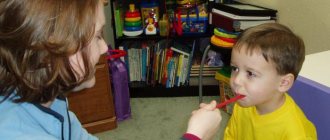
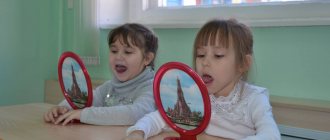
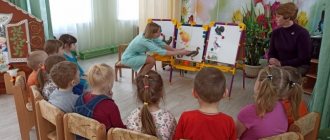
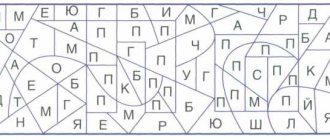

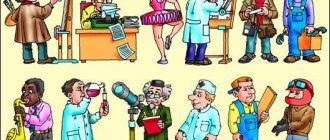
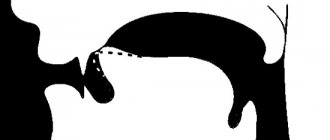
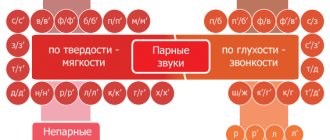
![Producing the sound [L] to a child in stages. Articulation gymnastics, speech therapy exercises, pronunciation lessons with pictures](https://doktorobrubov.ru/wp-content/uploads/postanovka-zvuka-l-rebenku-poetapno-artikulyacionnaya-gimnastika-logopedicheskie-uprazhneniya-uroki-330x140.jpg)